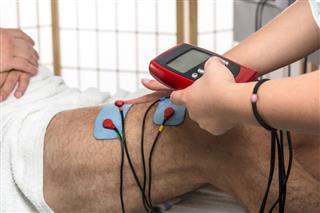
Muscular dystrophy (MD) is a genetic disorder affecting one in every 3500 births. This HealthHearty article deals with the life expectancy of this disorder depending upon its various types.
Muscular dystrophy refers to a group of about 20 disorders that affect the normal muscular movement in the individuals. These are mostly genetic disorders that affect male children more than female ones. However, some forms of muscular dystrophy affect both the sexes equally. The severity and life expectancy greatly depends upon the individual type of disorder.
What is Muscular Dystrophy
It is the result of abnormalities in genetic composition of the individual. This disorder prevents the body from building and maintaining healthy muscle tissues. Over the time, the muscle cells are fast replaced by adipose tissue (fat) or connective tissue. As a result, the person loses his ability to walk, sit, or perform any activities, which we take for granted. Depending upon the type of MD, the symptoms may surface in the early childhood or they may develop later, even in adulthood. Children with this condition show late muscular development. They are unable to walk normally, without losing their balance. They have difficulty in climbing stairs and performing physically exerting activities, like, running, jumping, playing, etc. In later stages of the progression of the disorder, one may have diminished heart function and respiratory function. This greatly puts the life of patient in danger.
Life Expectancy
Duchenne’s Muscular Dystrophy (DMD)
This is the most common form of MD affecting only boys. Since, this is an X-linked genetic disorder, males are the victims of it. However, females may carry the defective gene, and pass it on to their offspring. The symptoms of DMD are evident between the age of 2 to 6, when the child shows abnormal muscle development. By the time the child reaches 10 to 13 years of age, he becomes bound by a wheelchair. The disease keeps on progressing such that during late teens the child falls prey to several heart and respiratory disorders. People with this disorder rarely survive their early twenties.
Becker Muscular Dystrophy (BMD)
This is a less severe form of MD with a good life expectancy. The symptoms begin in late childhood or even in early adulthood. People with this disorder can lead a normal and active lifestyle without the need for a wheelchair. Although, these people can live fairly long lives, their life expectancy is largely determined by the severity and progression of the disease. People with this disorder usually face health issues, such as, breathing difficulty, heart, bone, muscle, and joint problems.
Congenital Muscular Dystrophy (CMD)
This form of MD affects girls as well as boys. The symptoms can surface either during childhood or they may erupt as late as 25 years of age. The symptoms aren’t as easy to diagnose, though poor muscle development and weakness are common. If the symptoms become evident during childhood, they may lead to learning disabilities and mental retardation. The degree of progression of the disease may greatly vary for each individual.
Diagnosis for this disease is done, if unusual muscle development is recorded in the child. A test is performed to check the level of an enzyme named serum creatine kinase, which is released in the bloodstream after degeneration of muscle tissues. Higher levels of these enzymes confirm the possibility of MD.
Although, there is no permanent cure for muscular dystrophy, its progression can be controlled with the help of certain medical treatment methods. These methods may fairly increase the life expectancy for people suffering from this condition.









